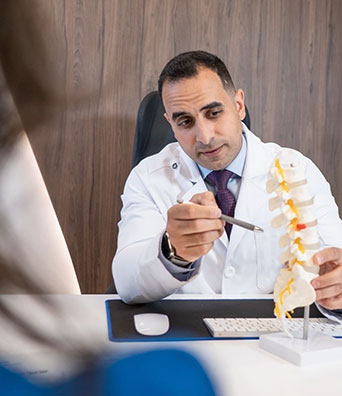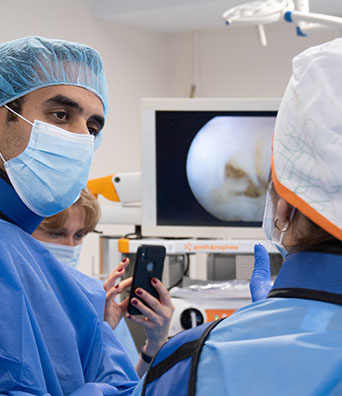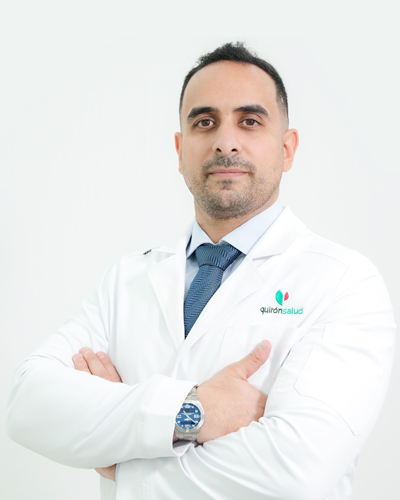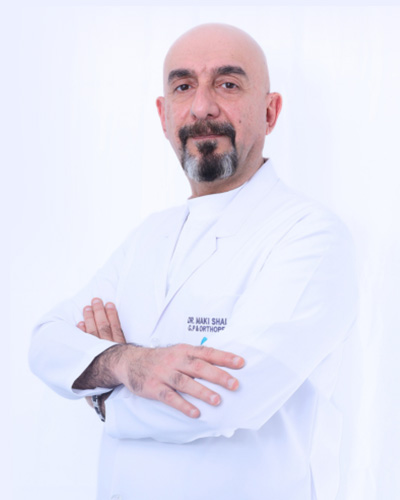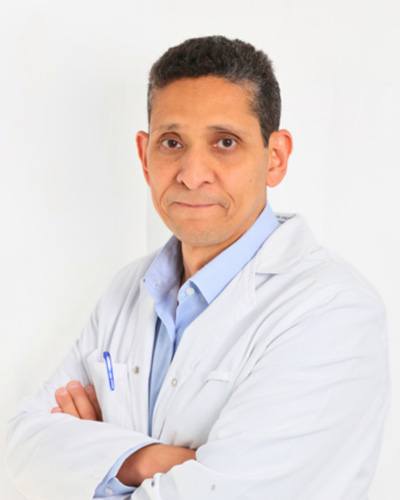Orthopedics

of Spanish Medical
Health Excellence
Common conditions treated under orthopedics:
- Joint pain due to arthritis
- Bone fractures
- Soft tissue (muscle, tendon, and ligament) injuries
- Back, neck, and shoulder pain
- Bursitis
- Carpal tunnel syndrome, hand arthritis, & hand injuries
- Overuse and sports injuries, including meniscus tears
- Tendinitis and anterior cruciate ligament (ACL) tears
- Congenital conditions, such as clubfoot, bow legs, hips dysplasia, and scoliosis
- Hand arthritis and hand injuries
- Bone tumors
- Orthopedic trauma
- Limb lengthening
- Achilles tendon injuries, bunions, hand, foot, & ankle injuries
- Osteoporosis
Types of treatments under orthopedics
Depending on the condition, an orthopedist can recommend two treatment procedures: non-surgical and surgical.
The types of treatments that fall under non-surgical treatments are also called “conservative treatments.” The orthopedists will consider this as the first treatment option before recommending a surgery- if necessary. Some of the common non-surgical treatments done under orthopedics include exercises or stretches to improve strength, immobilization, medications to relieve symptoms, and lifestyle changes.
When to see an Orthopedist?
If you find you have any pain or swelling in your bone that is recurring or doesn’t respond to home care and causes trouble performing your daily activities, you have to consult an orthopedist.
Even if you observe any nerve-related uneasiness like numbness and tingling in your arms or legs, or if you observe a reduction in a joint’s mobility or range of motion, such as your knee, elbow, or shoulder, you will need to check with an orthopedist.
Besides, as sports injuries can also build up musculoskeletal issues, any severe bones, muscles, or joints injuries may require the attention of an orthopedist as well.
Why choose Quirónsalud?
At Quirónsalud, we prioritize your health and convenience. We use cutting-edge technology to ensure you receive the highest quality of treatment available. Our team of skilled doctors has vast experience in their respective specialties and will help you recover successfully from any orthopedic pathology.
The treatments we offer are minimally invasive to help you recover quickly without significant complications. We would prescribe non-surgical interventions first. If they are not adequate to treat the problem, we will opt for surgical procedures. Our surgeons are highly trained and capable of performing complex surgeries with maximum precision and care; therefore, you will be able to recover successfully in the shortest time with minimum risk of complications.
Our Orthopedic Specialists
We are proud to have a team of doctors who are pioneers in their field and strive to provide high quality of care.
Head of the Department of Orthopedic & Trauma Surgeon
General Practitioner
Orthopedic Surgery Consultant
What are the services we offer?
Advanced screening techniques are crucial to help doctors diagnose your condition accurately and prescribe effective treatment. We use specialized tests that are backed by extensive research to provide comprehensive results.
It is an advanced spine surgery that uses state-of-the-art techniques with minimal invasion. It provides a quick recovery time with significantly less recurring pain than traditional surgeries.
It is the most common type of orthopedic surgery and involves replacing the worn-down ball and socket of the hip. It helps restore function and reduce pain significantly.
It is a critical component of many other procedures and is minimally invasive. It involves inserting a lens through a small incision so that the surgeon can see the internal regions, remove damaged cartilage, and make minor corrections.
If there is significant damage to parts of the knee, surgeons will carry out either partial or total replacement surgery. It can help reduce pain and improve flexibility.
Similar to the above procedure, this involves replacing parts of the shoulder and rotator cuff in case of damage. Surgeons use metal components to replace the shoulder ball and socket.
Fractures and dislocations to hand, fingers, and wrist, carpal tunnel syndrome, and tendonitis can be corrected through surgical procedures. In some cases, metal components may need to be inserted to replace any significantly damaged part.
It is one of the primary ligaments of the knee and is prone to tear and damage during strenuous exercise or sports. This procedure involves using a tendon from another part of the body to build a new ligament for the knee.
Frequently Asked Questions
The symptoms related to your musculoskeletal disorder or condition often vary depending on your issue. However, the common symptoms of musculoskeletal disorders include weakness, pain, joint noises, stiffness, and a reduction in the range of motions. In some cases, you may also experience inflammation, leading to symptoms like swelling, pain, tenderness, impaired function, warmth, and redness of your overlying skin.
Both sports medicine doctors and orthopedic surgeons are specialized in the diagnosis and treatment of musculoskeletal conditions. However, a sports medicine doctor is specialized only in the non-operative and non-surgical treatments of sports-related conditions and injuries. An orthopedic surgeon is specialized to do all that a sports medicine doctor does and is also qualified and verified to conduct surgical and operative treatments for musculoskeletal disorders.
Get Treated Now,
Pay Later With tabby
Book An Appointment
Fill the form below or call/whatsApp +971 50 309 3131 to book an appointment.
People globally have a musculoskeletal condition
22% to 33%
Early treatment can preventlong-lasting consequences
